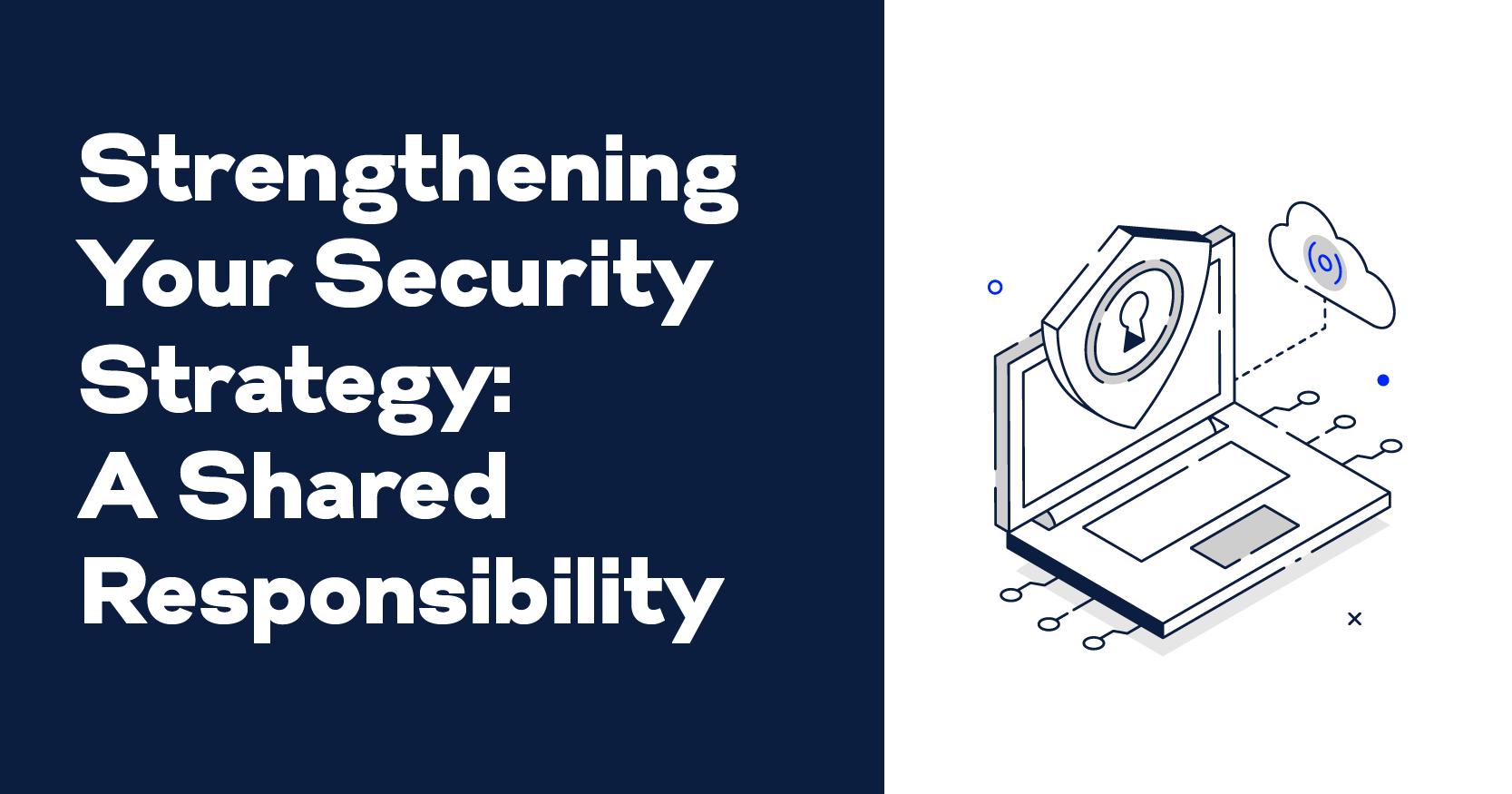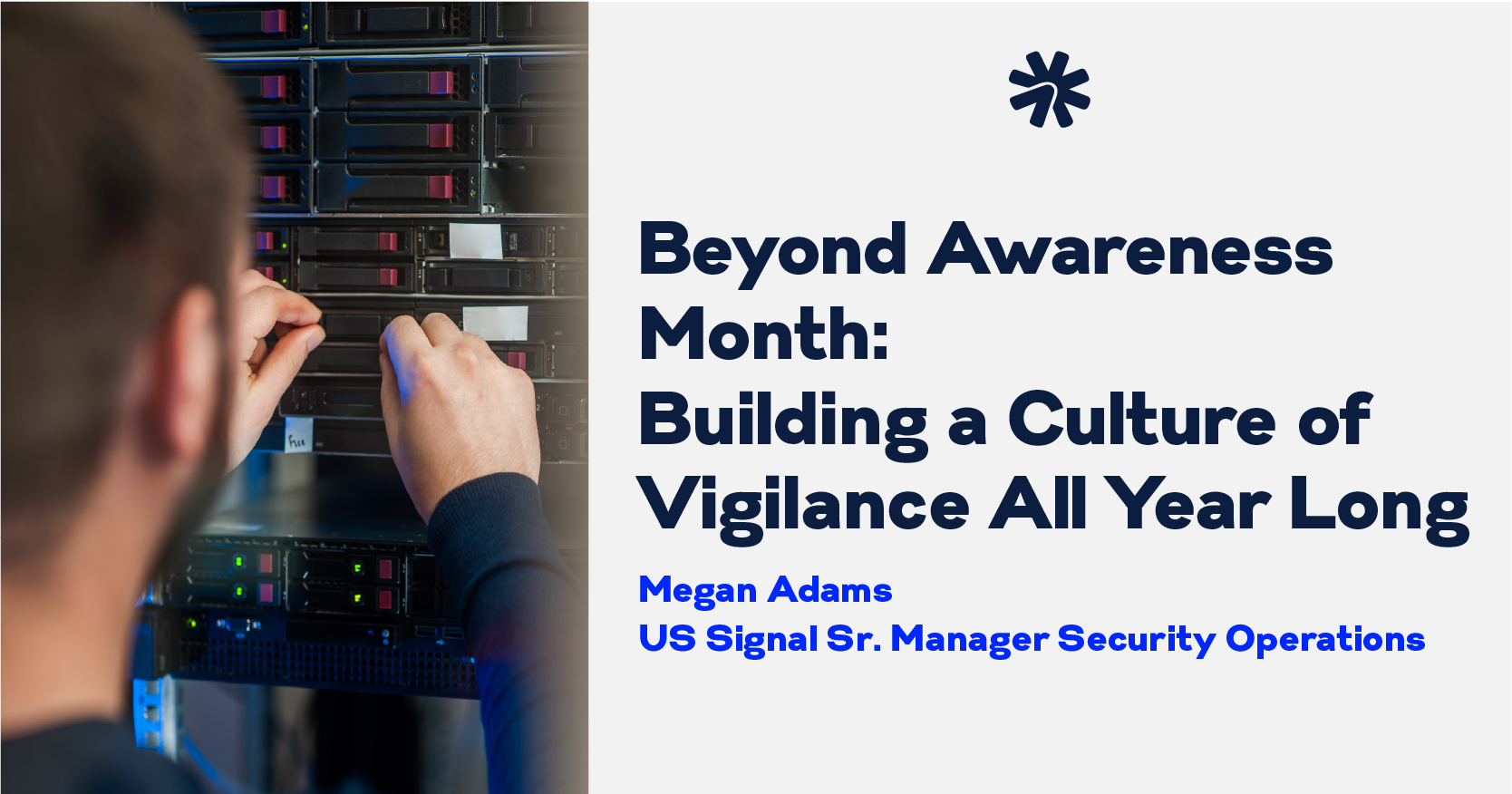Strengthening Your Security Strategy: A Shared Responsibility

Today, on World Security Day, it’s important to pause and consider the current security landscape. Rapid advances in technology have provided businesses with increased flexibility and efficiency. However, alongside these benefits come significant security challenges that require careful management and a thoughtful security strategy.
New Technology: Opportunities and Challenges
Technology adoption allows businesses to scale rapidly and manage costs more effectively. Moving away from traditional hardware systems to more flexible, digital environments helps companies become more agile and responsive. Yet, the interconnected nature of today’s systems can also create vulnerabilities, making solid security practices essential.
Understanding Shared Responsibility
Security isn’t something handled entirely by your technology provider; it’s a shared responsibility. Providers like US Signal are responsible for securing their platforms and infrastructure. Meanwhile, customers must manage security for their applications, data, and user access. Clear communication and understanding between provider and customer are key to maintaining a secure environment.
Compliance with recognized standards such as NIST, HIPAA, CIS Controls, and GDPR is also essential. These guidelines help both providers and users meet high security standards, ensuring data protection and trust.
Network Security: Building Strong Defenses
Think of your security as a fortress with multiple layers:
- Firewalls control access to your network by filtering incoming and outgoing traffic.
- Intrusion Detection Systems (IDS) monitor continuously, identifying unusual activity and alerting you immediately.
- Micro-segmentation limits risk by isolating different parts of the network, so a breach in one area doesn’t spread easily.
- Intrusion Prevention Systems (IPS) proactively block threats before they can cause harm.
- Regular vulnerability assessments and penetration tests help identify weak points early, allowing for quick remediation.
Managing Identity and Access (IAM)
Identity and Access Management involves more than simply granting or denying permissions. IAM solutions track user behaviors, detecting unusual patterns that might indicate security threats. Multi-factor authentication (MFA) adds another layer of protection by requiring multiple verification steps, significantly reducing the chance of unauthorized access.
Staying Ahead of Threats
Relying on reactive security solutions, like traditional antivirus software, isn’t enough in today’s environment. Instead, organizations must proactively manage security. This includes regular vulnerability scanning, timely software updates, and ongoing security testing. As businesses increasingly use containers and microservices, embedding security measures from the beginning of the development process is critical.
Don’t Forget the Human Factor
People are often the weakest link in cybersecurity. Mistakes by employees, such as falling for phishing scams or poor password management, frequently open the door to security breaches. Regular training and awareness programs can transform your staff into active participants in your security strategy.
Selecting the Right Partner
Choosing a technology provider should be more than just picking a vendor—it should be about forming a trusted partnership. Evaluate providers based on their security practices, including regular security audits, incident response processes, and openness about past issues.
US Signal is committed to a proactive approach to security, providing comprehensive solutions tailored specifically for today’s complex environments. Our goal is to protect your assets and keep your business safe, resilient, and ready for future challenges.
On this World Security Day, consider how US Signal can strengthen your security posture. Contact us today to learn more about our solutions and how we can help secure your business.



